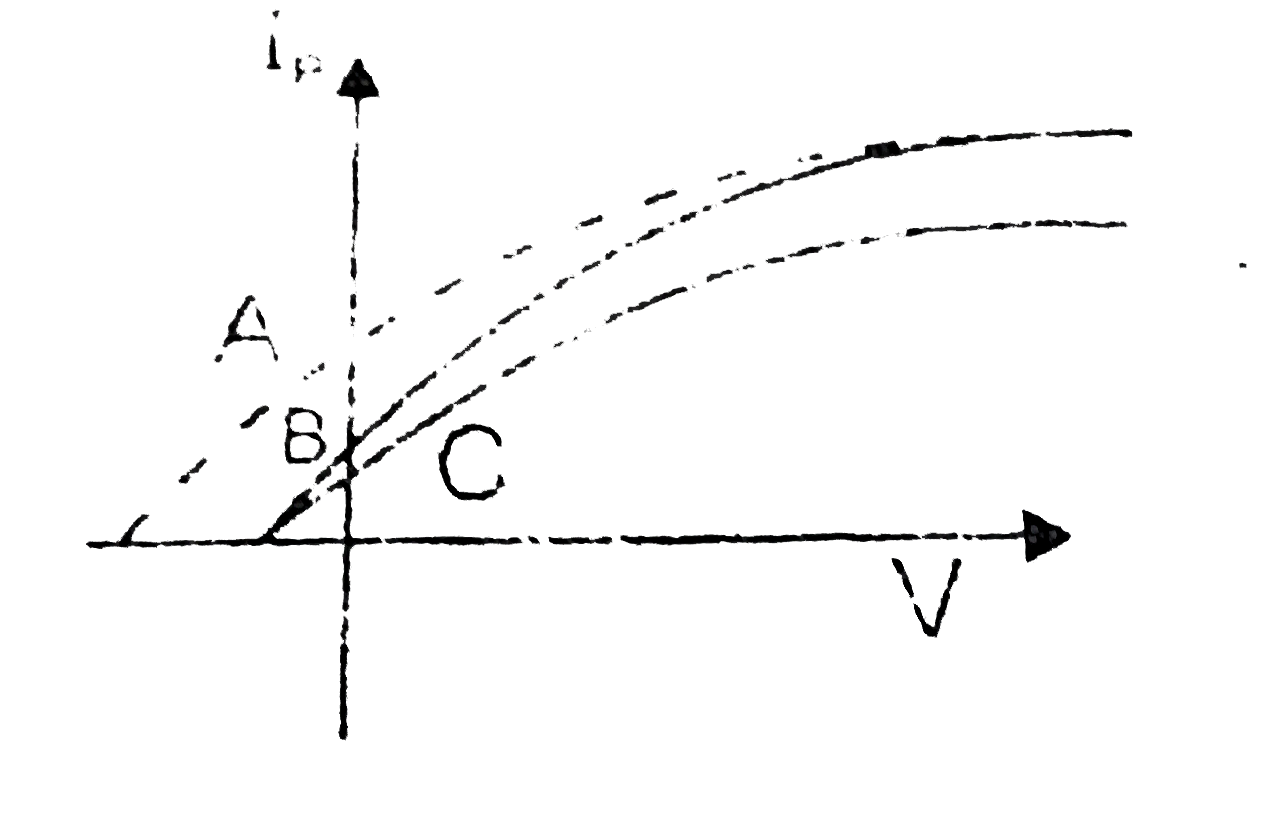When stopping potential is applied in an experiment of photoelectric effect, no photocurrent is observed. This means thatSolution in Telugu
The emission of photo electrons is stopped
The photoelectrons are emitted but are reabsorbed by the emitter
The photoelectrons are accumulated near the collector
The photoelectrons are dispersed from the sides of the apparatus
The correct Answer is:B
Step by step video, text & image solution for When stopping potential is applied in an experiment of photoelectric effect, no photocurrent is observed. This means that by Physics experts to help you in doubts & scoring excellent marks in Class 12 exams.
Topper's Solved these Questions
- BOOK - AAKASH SERIESCHAPTER - DUAL NATURE OF RADIATION AND MATTEREXERCISE - EXERCISE-I ASSERTION AND REASON4videos
DUAL NATURE OF RADIATION AND MATTER
- BOOK - AAKASH SERIESCHAPTER - DUAL NATURE OF RADIATION AND MATTEREXERCISE - EXERCISE=II42videos
DUAL NATURE OF RADIATION AND MATTER
- BOOK - AAKASH SERIESCHAPTER - DUAL NATURE OF RADIATION AND MATTEREXERCISE - PRACTICE EXERCISEX44videos
DUAL NATURE OF RADIATION AND MATTER
- BOOK - AAKASH SERIESCHAPTER - CURRENT ELECTRICITYEXERCISE - EXERCISE - III73videos
CURRENT ELECTRICITY
- BOOK - AAKASH SERIESCHAPTER - ELECTRIC CHARGES AND FIELDSEXERCISE - Practice Exercise57videos
ELECTRIC CHARGES AND FIELDS
Similar Questions
(A) : Photoemission of electrons from a photosensitive surface is possible only if the incident radiation has a frequency above threshold frequency
(R): Unless the hv>hv0 = work function of metals, no photoemission of electrons is possible04:23View SolutionA 100 W sodium lamp radiates radiates energy uniformly in all directions. The lamp is located at the centre of a large sphere that absorbs all the sodium light which is incident on it. The wavelength of the sodium light is 589 nm.
At what rate are the photons delivered to the sphere ?03:15View SolutionTwo separate monochromatic light beams A and B of the same intensity are falling normally on a unit area of a metallic surface. Their wave lengths are λA and λB, respectively. Assuming that all the incident light is used in ejecting the photoelectrons the ratio of the photoelectrons from the beam A to that from B is :
03:31View SolutionIn a hydrogen tube it is observed that through a given cross-section 3.13×1015 electrons persec. moving from right to left and 3.12×1015 protons per sec are moving from left to right. The electric current in the discharge tube and its direction is
02:14View SolutionWat is the charge acquired by a body when one million electrons are transferred to it.
01:04View SolutionA non-monochromatic light is used in an experiment on photoelectric effect. The stopping potential
03:59View SolutionThe photocurrent in an experiment on photoelectric effect increases if
04:21View SolutionThe graph is showing the photocurrent with the applied voltage of a photoelectric effect experiment. Then
 .05:30View Solution
.05:30View SolutionIn a photoelectric experiment, if stopping potential is applied, then photocurrent becomes zero. This means that:
02:43View SolutionIn photoelectric effect, stopping potential depends on
01:37View SolutionIn photoelectric effect , photocurrent
00:56View SolutionThe magnitude of stopping potential for the photoelectric effect is
02:22View SolutionIn photoelectric effect the slope of stop of stopping potential versus frequency of incident light for a given surface will be
02:17View SolutionA non-monochromatic light is used in an experiment on photoelectric effect. The stopping potential
01:39View SolutionThe magnitude of stopping potential for the photoelectric effect is
01:35View Solutionફોટોઇલેક્ટ્રીક અસરના પ્રયોગમાં આપાત વિકિરણની આવૃત્તિ સાથે સ્ટૉપિંગ પોટેન્શિયલના આલેખના અવલોકનો લખો.
View Solution

